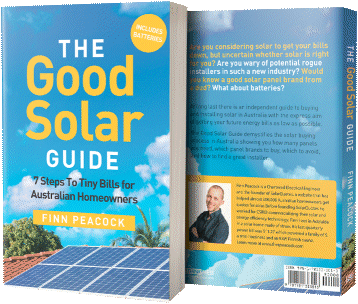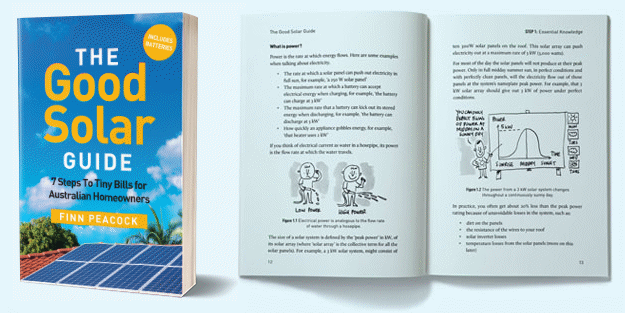![]()
Australian firm Stellar PV recently scored government cash towards investigating the potential for a local ‘world-class’ silicon ingot and wafer facility. Discover more about the company and its plans for creating these crucial materials for solar panel manufacturing.
What’s Stellar PV Doing?
The company has set its sights on developing a 2 GW-scale facility for producing silicon ingots and wafers at Lansdown Eco‑Industrial Precinct in Queensland, approximately 40 kilometres south of Townsville.
Solar panels are comprised of cells, which are made using wafers produced from thinly-sliced ingots.
The company hopes to have the facility up and running in 2028, pending regulatory approvals.
Stellar PV is preparing to manufacture monocrystalline silicon ingots using the Czochralski method. The following video from the University of NSW describes the basics of Czochralski (Cz) ingot pulling:
Stellar PV will be using the latest advancements in the Czochralski method.
“By integrating automation and AI, Stellar PV will control key parameters such as temperature, pulling rate, and rotation speed in real time,” the company recently stated. “This enhances process stability, reduces defects, and improves overall yield. The result is high-purity, uniform ingots that enable the production of premium solar wafers, forming the foundation for high-performance solar cells.”
How Much Money Did Stellar Get?
Early this month, the Australian Renewable Energy Agency (ARENA) awarded Stellar PV $4.7 million to support a feasibility study related to the facility. The grant was part of $45.5 million announced by ARENA under the Albanese Government’s $1 billion Solar Sunshot program, which seeks to support local solar PV manufacturing industry.
Not New Kids On The Block
While a very young company (established in 2023), Stellar PV is led by an industry veteran.
Ted Szpitalak (pictured above) was a founding member of the Australian research team that developed PERC1 solar cell technology in the 1980’s, which many years later became dominant2. The team was led by Professor Martin Green, who is sometimes referred to as the “father of photovoltaics”.
Szpitalak also worked at the Solar Energy Research centre (UNSW?) in the 1980s and 1990s and joined Samuel Yang and Dr Zhengrong ‘Sun-King’ Shi to establish the first major solar manufacturer in China – Suntech. Szpitalak and Yang then went on to help establish another Chinese solar panel manufacturer, JA Solar. And the grass hasn’t been growing under his feet since.
Where Will The Polysilicon Come From?
To make ingot and wafers, high quality polysilicon is needed, which is sourced from quartz — something Australia has plenty of. But there are no solar polysilicon production facilities in Australia yet.
That could soon change — the ARENA funding announcements also included $5 million for Solquartz to investigate setting up a low-emissions polysilicon plant (also at Lansdown), and $1.3 million to Energus to investigate low-emissions polysilicon production at AGL’s Hunter Energy Hub in New South Wales.
So, there’s perhaps potential for Stellar PV to be using Australian polysilicon from the get-go, but there would be many moving parts involved in getting that happening.
That leaves solar cell manufacturing, and there’s already a firm well under-way on that side of things: Sundrive.
A Fully Australian-Made Solar Panel Soon?
All the elements appear to be coming together for a truly Australian-made solar panel3 to be possible.
But just because you can do something, it doesn’t always mean you should, and success for the companies funded is by no means guaranteed. However, in 2022 CSIRO released its Australian Silicon Action Plan outlining the economic and other benefits of investing in an integrated silicon and solar cell local supply chain.
Footnotes
- PERC stands for Passivated Emitter and Rear Cell, or Contact. ↩
- Although TopCON (Tunnel Oxide Passivated Contact) has eclipsed PERC in recent years. ↩
- Tindo Solar manufactures solar panels here in Australia (in Adelaide) with imported cells and bits’ n bobs. Tindo also received a big lump of cash to crank up its operations from the recent ARENA funding round — $34.5 million. The company has previously stated it is committed to integrating Australian-made components into its solar panels, and is making some headway there. ↩


 RSS - Posts
RSS - Posts



Wow! While it initially seemed nuts to try to compete with China, given their enormous economies of scale, including a gigantic domestic market, going all the way from raw quartz to doped cells is essentially highly automated use of substantial amounts of energy, increasingly from low cost solar and battery.
Making only 15 cm diameter ingots, not the 30 cm monsters used for IC manufacture, is simpler (decades older tech), and the arcs sliced off for square cells go back into the Czochralski pot – no waste.
It’ll be decades before the market volume reduces to replacement panels, with growth still wildly exponential. And it makes its own power source, allowing deals for even cheaper own energy supply. Guaranteed demand is lifeblood to a solar farm. It could all work, you know – a rare Australian timely seizing of a tech opportunity. (That’d be two feral subsidy programs which turned up trumps. What’s going on here? 😉
And panel export is very efficient energy export, well paid.